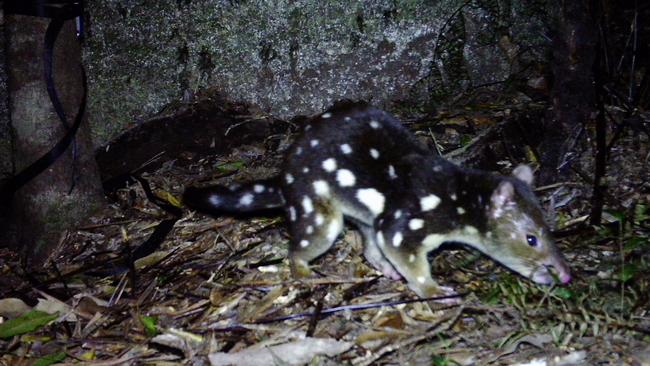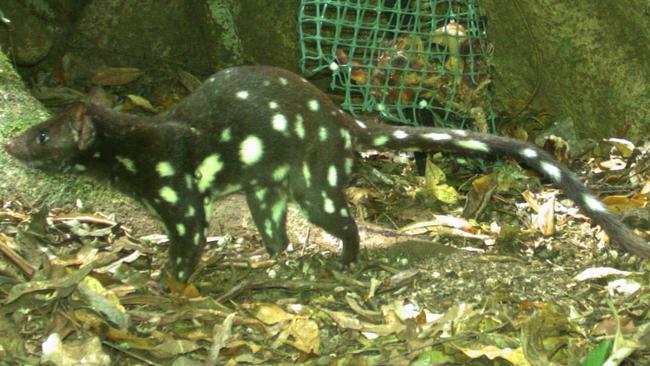Far North spotted-tailed quoll population endangered
The largest marsupial predator on the Australian mainland lives in the Far North but is now under threat of extinction as development creeps into the Wet Tropics’ wilderness.

Cairns
Don't miss out on the headlines from Cairns. Followed categories will be added to My News.
ONE of the Far North’s most reclusive residents is under threat with the spotted-tailed quoll population plunging.
James Cook University academic Conrad Hoskin said mainland Australia’s largest remaining marsupial predator had already disappeared from much of the Wet Tropics with isolated colonies only surviving in small “core areas” on the Tablelands.
“We have five remaining populations, isolated from each other, with less than 300 individual animals,” he said.
“There are three populations in the northern Wet Tropics that are not huge but not declining either and the Tablelands population has declined badly.

MORE NEWS
Lee Kernaghan to headline music festival
Twist in Tablelands crash that injured five
“The Tablelands used to be quoll heartland – early sightings came from Ravenshoe, Millaa Millaa, Topaz and Malanda – and now there’s only one pocket in the southeastern corner.
“The places the spotted-tailed quoll now exist are the most remote, areas not being fragmented or cut by roads, so they are surviving in the parts of the Far North that are as far from humans as possible.”
Dr Hoskins, a senior lecturer in JCU’s College of Science & Engineering, was lead author on a study into the Far North’s quoll species that lived in the mountains between Townsville to Cooktown.
He said his team analysed documents relating to quoll sightings, going back as far as early last century, to assess how the Far North’s spotted-tailed quoll had been impacted by settlement.

“There were a lot of records for this creature, people took notice when they saw it, and we found by the 1950s it had disappeared from the Cardwell Range with the Tablelands suffering a big decline during the 1970s and 80s.
“Today road kills are the biggest danger, and toads are coming into it now as they move into upland areas where they haven’t been seen before, and quolls that live on the edge of the forest threatened by baits that are laid for other animals.
“We think climate change looms as a further threat – being pinned up in the mountains which are the coldest and wettest part of the Tablelands – and things that happen below them in the ecosystem can magnify the problem, and climate change would knock their pray around.”
Originally published as Far North spotted-tailed quoll population endangered


